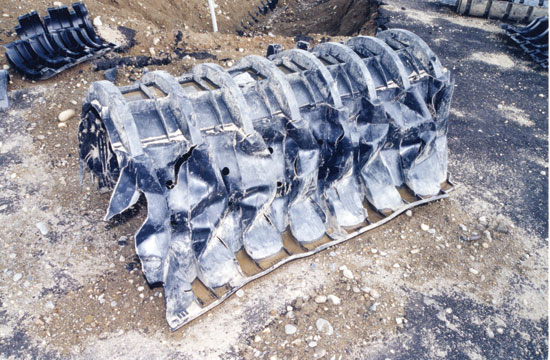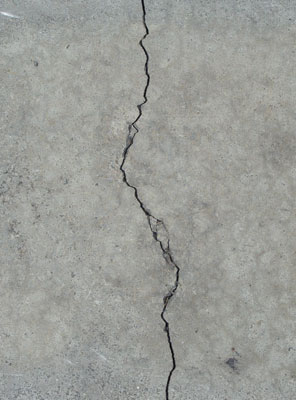Green Building: Essential Design Strategies for a Sustainable Future
Metal Pipe System Failures
Maintenance-related failure. In low-profile applications where no access is provided to maintain or clean out the system, failure of a corrugated metal pipe system can often occur as a result of clogging from debris that enter and build up in the system.
Functional failure. As with all other stormwater management systems, corrugated metal pipe systems depend on proper design at the beginning of a project to accurately calculate the required storage volume and ensure optimal function of the system before, during and after any storm event.
Structural failure. Metal pipe relies on accurate placement and compaction of structural backfill, especially under the haunches of the pipe. Uncompacted fills such as “pea gravel” are not recommended as they can result in pipe deflection and failure. Failure to properly install connecting bands with gaskets can result in exfiltration of water and a compromise of the backfill envelope and also ensure that backfill does not infiltrate into the pipe. Application of ASTM 798 “Standard Practice for Installing Corrugated Metal Pipe in Sewers” is recommended. Traffic loads without proper minimum cover over the top of corrugated metal pipe is the most common cause of failure. ASTM A796 “Standard Practice for Structural Design of Corrugated Steel Pipe, Pipe-Arches, and Arches for Storm and Sanitary Sewers and Other Buried Applications” prescribes the method for determination of pipe metal gages and the allowable minimum cover for traffic loading.
Plastic System Failures
Maintenance-related failure. Ongoing maintenance is crucial to any system. Plastic pipe and chamber systems that do not have access for maintenance can accumulate debris build-up and result in clogging of the system.
Functional failure. Plastic pipe stormwater management systems often incorporate the void space within surrounding stone backfill as storage capacity for the overall system. In these applications, accurate compaction of stone fill material is critical to the function of the system to prevent wash outs and surface settling.
Structural failure. Plastic products can fail from exposure to extreme temperatures, thermal expansion and improper installation such as incomplete or improper fill and compaction around the system. Stackable modular plastic units have been involved in high-profile structural failures that resulted in Fairfax County, Va. issuing a moratorium on the use of five specific plastic modular products. As with corrugated metal pipe, plastic pipe, plastic chambers and plastic modules are quite flexible and their long-term performance is a function of well-placed granular, select structural backfill. In addition, if deflected, gaps in joints and connections can open, allowing backfill to infiltrate; loss of structural support will occur so deflection control during backfilling is of paramount importance. Exfiltration of captured stormwater can also be a concern as this can saturate the surrounding backfill envelope.
 |
Plastic arch collapse Photo courtesy of Zallen Engineering, Oldcastle Precast |
ASTM 2321 “Standard Practice for Underground Installation of Thermoplastic Pipe for Sewers and Other Gravity Flow Applications” should be followed to ensure the proper installation of plastic pipe systems. ASTM 2787 “Standard Practice for Structural Design of Thermoplastic Corrugated Wall Stormwater Collection Chambers” governs the design of plastic chambers and provides guidance for installation.
Concrete System Failures
 |
Structural concrete failure Photo courtesy of Zallen Engineering, Oldcastle Precast |
Maintenance-related failure. Concrete stormwater management systems, while structurally superior to other material options, require the same ongoing maintenance as other systems. Concrete systems require periodic clean out and removal of debris that build up during use and can restrict water flow through the system. Smaller diameter pipe systems have limited access and are difficult to maintain. Larger vault systems with manhole access will allow easy access for ongoing maintenance.
Functional failure. Proper site-specific hydraulic design is critical to the success or failure of all stormwater management systems. Improper design can result in inadequate flow through the system, insufficient treatment and inability to handle runoff volume. Improper site preparation can lead to differential settlement of the components.
Structural failure. While the controls of factory-produced precast are typically superior to poured-in-place concrete, there are a number of factors that can contribute to precast structural failures that must be considered. Improper structural design and designs that do not consider site-specific conditions can lead to reduced service life of the system.
Forming and pouring. Inadequate reinforcing within the concrete can also cause both poured-in-place and precast concrete to fail.
Inherent to poured-in-place concrete is the large number of variables that can impact the final product quality. These variables, mostly weather related, can impact concrete mix quality, forming and placement, and concrete curing. Concrete that is poured-in-place will require approximately 28 days to fully cure. During that time it is susceptible to adverse weather conditions that can affect the moisture content of the mix and cause physical or structural failure of the concrete. The risk of failure of poured-in-place concrete is compounded by premature backfilling of the structure.
Engineered For Success
Stormwater management solutions, whether above ground or below ground, are subject to failure from a variety of potential reasons if not designed, installed and maintained properly. Taking the time to understand those potential reasons and taking the necessary steps to prepare for, and avoid them, will lead to safer, better-engineered and structurally sound stormwater management systems that will last for years to come.
Reference: Collapse of Underground Stormwater Detention System www.zallenengineering.com/On-Line_Issues/OL-16.pdf









